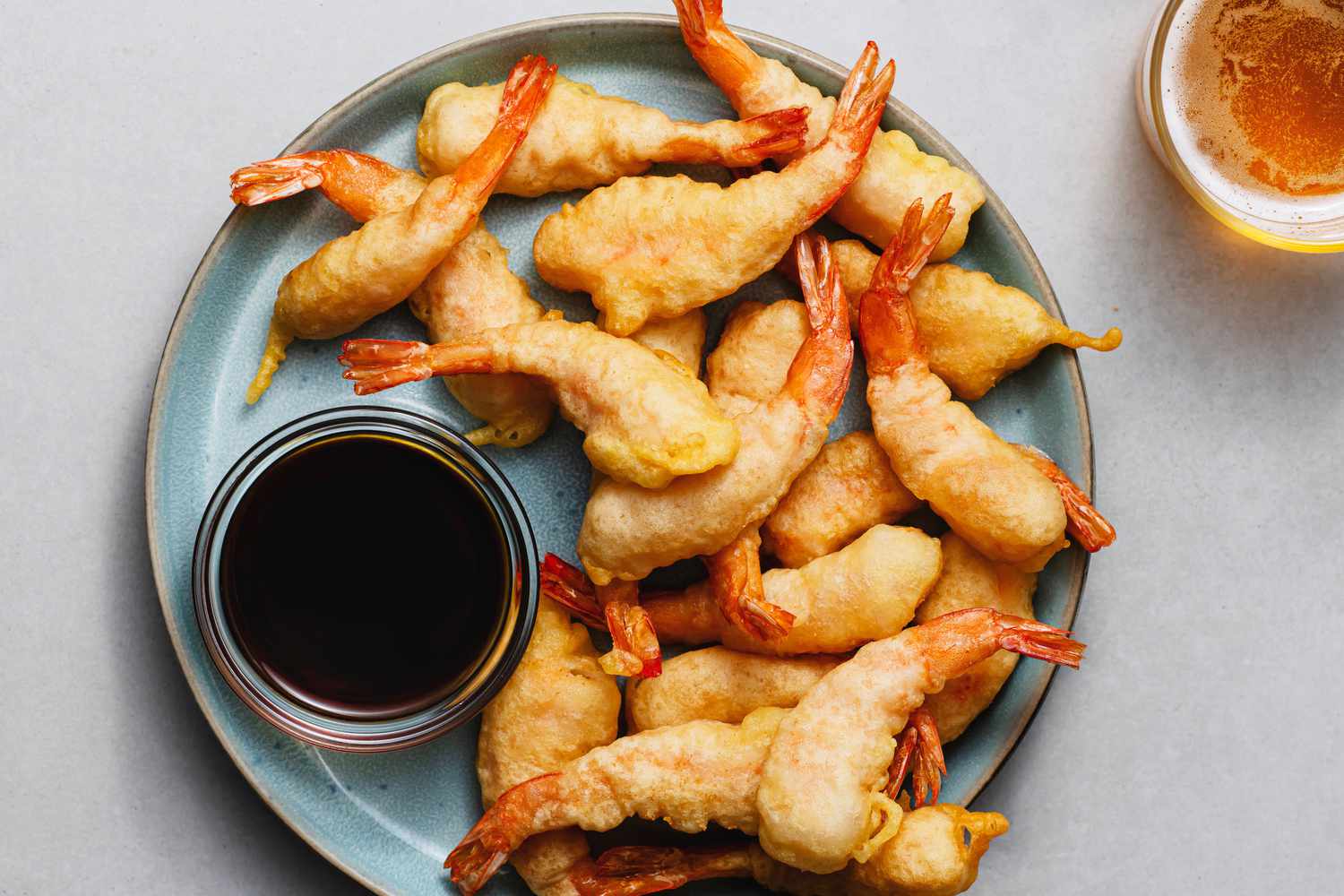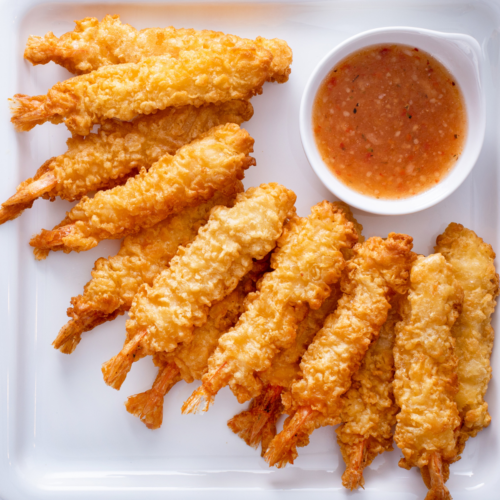
Short Description:
Tempura is a beloved Japanese dish known for its light, crispy batter and tender, flavorful fillings. Traditionally made with seafood and vegetables, tempura is deep-fried to golden perfection and served with a dipping sauce. Whether you’re a fan of shrimp, sweet potatoes, or zucchini, this guide will walk you through the process of making tempura at home. With a detailed ingredients list, step-by-step instructions, nutrition facts, and expert tips, you’ll be able to create restaurant-quality tempura in your own kitchen.
Ingredients List
Here’s what you’ll need to make tempura at home:
For the Tempura Batter:
- All-Purpose Flour: 1 cup
- Cornstarch: 2 tablespoons
- Egg: 1 large (chilled)
- Ice-Cold Water: 1 cup (chilled)
- Baking Soda: 1/4 teaspoon (optional, for extra crispiness)
For the Fillings:
- Shrimp: 10-12 large (peeled and deveined)
- Vegetables:
- 1 sweet potato (sliced thinly)
- 1 zucchini (sliced into rounds or strips)
- 1 bell pepper (sliced into rings)
- 1 cup broccoli florets
For the Dipping Sauce (Tentsuyu):
- Dashi Stock: 1 cup (or substitute with water)
- Soy Sauce: 1/4 cup
- Mirin: 2 tablespoons
- Sugar: 1 teaspoon
For Frying:
- Vegetable Oil: 2-3 cups (for deep frying)

Step-by-Step Recipe
Step 1: Prepare the Fillings
- Peel and devein the shrimp, leaving the tails on for presentation. Make small incisions along the underside to prevent curling.
- Slice the sweet potato, zucchini, bell pepper, and broccoli into bite-sized pieces.
- Pat all fillings dry with paper towels to ensure the batter adheres properly.
Step 2: Make the Dipping Sauce
- In a small saucepan, combine dashi stock, soy sauce, mirin, and sugar.
- Heat the mixture over medium heat until the sugar dissolves. Let it cool before serving.
Step 3: Prepare the Tempura Batter
- In a large bowl, mix the flour and cornstarch.
- In a separate bowl, lightly beat the chilled egg and mix it with the ice-cold water.
- Gradually add the wet ingredients to the dry ingredients, stirring gently until just combined. The batter should be lumpy—this is key to achieving a light and crispy texture.
Step 4: Heat the Oil
- Fill a deep pot or skillet with 2-3 cups of vegetable oil and heat it to 340-360°F (170-180°C). Use a thermometer to monitor the temperature.
Step 5: Fry the Tempura
- Dip the fillings into the batter, shaking off any excess.
- Carefully place them in the hot oil, frying in small batches to avoid overcrowding.
- Fry shrimp for 2-3 minutes and vegetables for 1-2 minutes, or until golden and crispy.
- Remove the tempura with a slotted spoon and drain on a wire rack or paper towels.
Step 6: Serve and Enjoy
- Serve the tempura immediately with the dipping sauce on the side.
- Garnish with grated daikon radish or a sprinkle of salt for extra flavor.
Nutrition Facts
Tempura is a delicious treat, but it’s important to enjoy it in moderation due to its frying process. Here’s a breakdown of its nutritional value per serving (3-4 pieces):
- Calories: 200-300 kcal
- Protein: 8-12g (from shrimp and batter)
- Carbohydrates: 20-30g (mainly from batter and vegetables)
- Fats: 10-15g (from frying oil)
- Fiber: 2-4g (from vegetables)
- Vitamins and Minerals: Rich in vitamin A, vitamin C, and potassium from the vegetables.
Health Benefits of Tempura
- Rich in Vegetables: Tempura often includes nutrient-dense vegetables like sweet potatoes, zucchini, and broccoli, which are high in vitamins and antioxidants.
- Good Source of Protein: Shrimp and other seafood used in tempura provide high-quality protein.
- Quick Cooking Method: Frying retains the nutrients in vegetables better than boiling.
- Customizable: You can use a variety of vegetables and proteins to suit your dietary preferences.
Ending Notes and Tips
- Keep the Batter Cold: Use ice-cold water and refrigerate the batter briefly to ensure a light, crispy texture.
- Don’t Overmix the Batter: Lumps are good! Overmixing will result in a dense, heavy coating.
- Control the Oil Temperature: Maintain the oil temperature between 340-360°F (170-180°C) for even frying.
- Serve Immediately: Tempura is best enjoyed fresh and crispy.
- Experiment with Fillings: Try mushrooms, green beans, or even tofu for variety.








